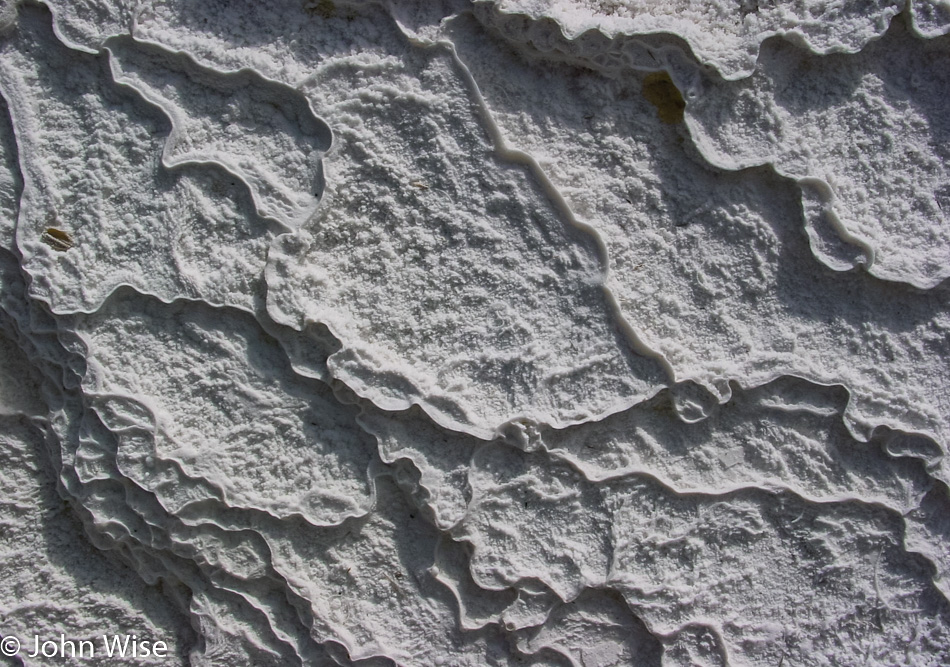
Dissolved minerals in waters heated by processes deep underground flow, and when they do they have the potential to pool in places. As these calcium carbonate-rich waters deposit their chemical soup, they start forming travertine. Layer upon layer, the molecules bind to other nearby molecules of similar makeup, while at the edges of where the water pools, ridges form faster than on the bottom of the pool that has a larger surface area and before you know it (in geological terms) you are left with terraced pools of cascading water that are laying down floor tiles and countertops for people well into the future.
Here at Mammoth Hot Springs, the process of making travertine is happening right before our eyes. Things are not working like a perpetual machine of great efficiency because the heavily mineralized waters are not guaranteed to always be running. Maybe the plumbing below is broken, or winter didn’t deposit enough snow, changing the water table? Whatever the reason, it is likely the travertine pools we see on our trip will not be the ones you see on yours. The mineral deposits will still be here, but the water that is feeding them may have dried up or is flowing over another part of the mass that has been forming.
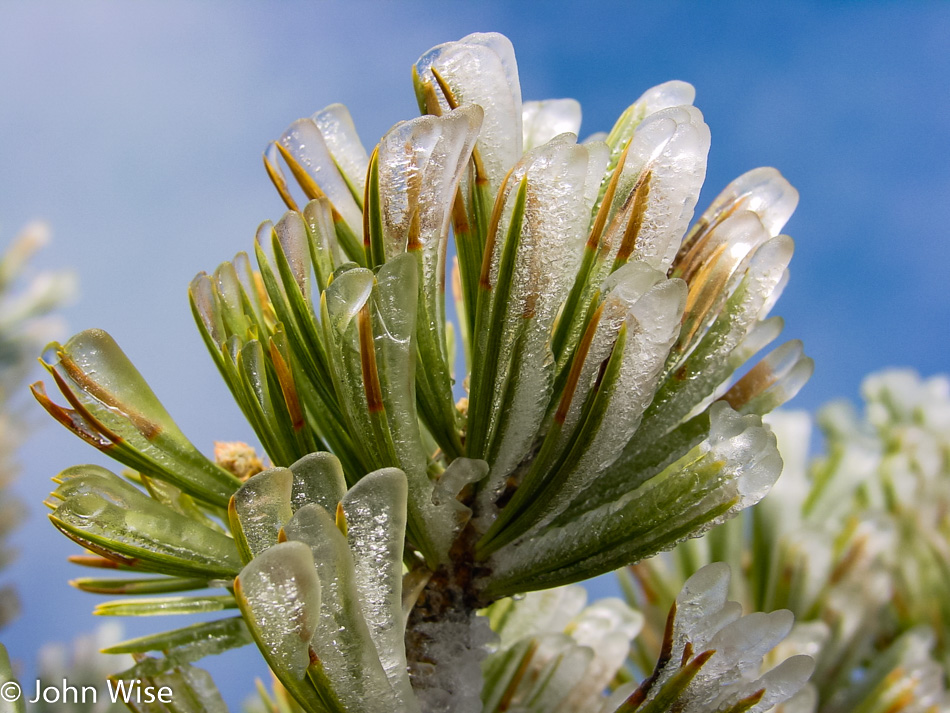
From the steam billowing off of the hot springs, the water condenses on nearby stuff, in this case, these pine needles, and as it freezes, the water molecules can build up, forming these mini ice knives that show you which way the wind was blowing.
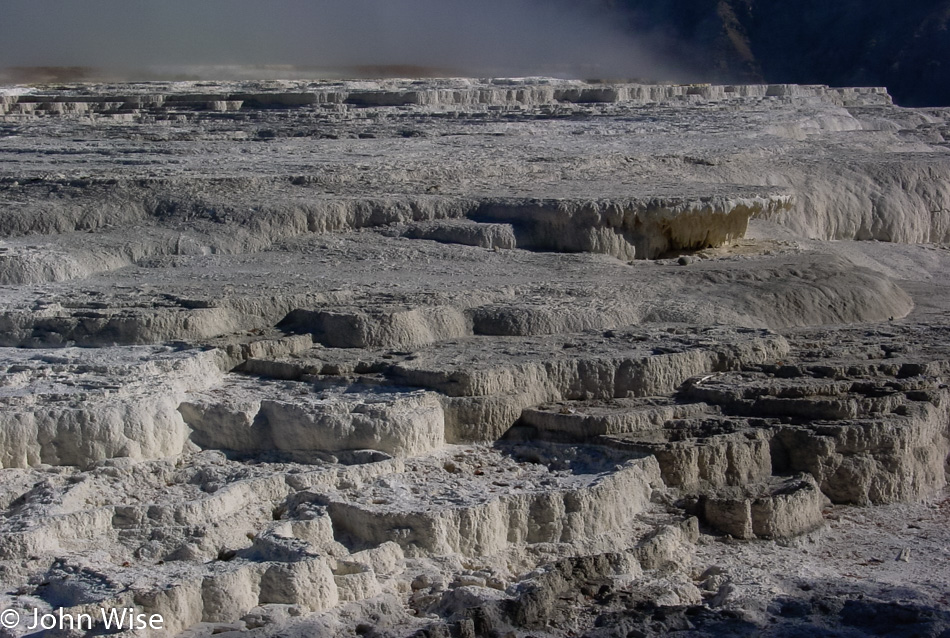
I find it interesting how the colors shift across this dry travertine and am intrigued, although it is only basic chemistry, at how the particulate mixture of the hot spring waters while making delivery of its runoff drops off the molecules that will shade one section with darker hues while on an adjacent pool, the water’s darker molecules now depleted leave the water to deliver a cleaner whiter calcium just next door. It all makes me wish I’d paid more attention in class and taken some advanced chemistry classes.
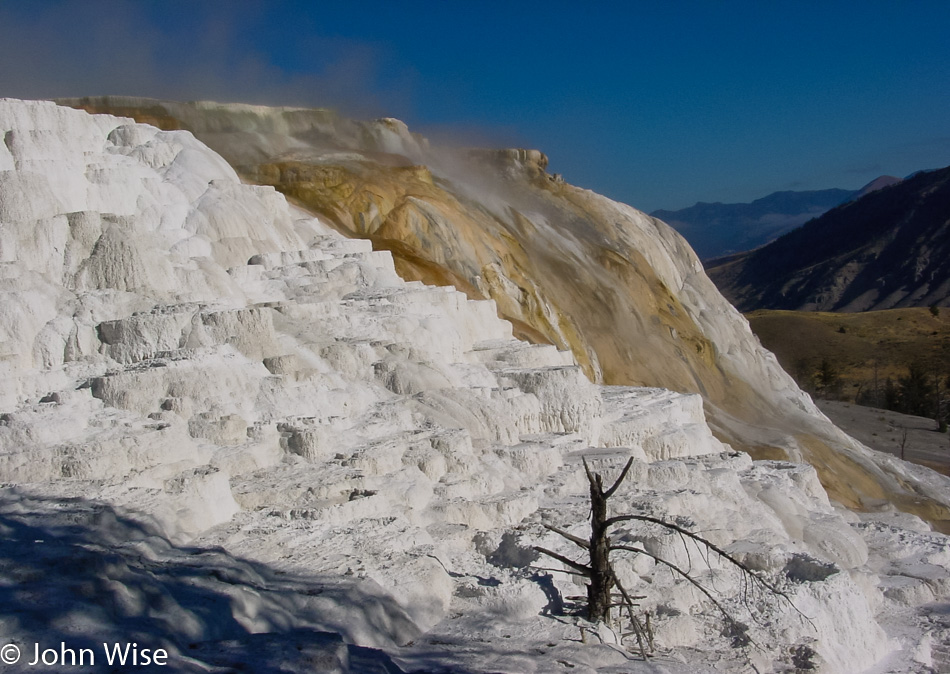
The cave has escaped its dark prison and turned the world inside out while psychedelically presenting itself to us to test if we believe what we see. Every day, we search for novelty in our own lives, try to find something new to entertain us, need to see a new movie or play a new video game, and yet here is nature offering us infinity while challenging the mind to find a vocabulary to adequately describe what we perceive. Even when presented with all the time we might need or like to analyze but a small corner of our world, we could spend a lifetime trying to accumulate the poetry of expression and scientific knowledge to remotely describe the beauty and complexity in that which we are attempting to comprehend. This then begs the question of when we encounter the nearly alienesque universe of the truly psychedelic how, if we only rarely encounter those states, can we begin to describe what they are when we can barely explain the totality of what’s occurring when an ocean wave breaks on a sandy shore?
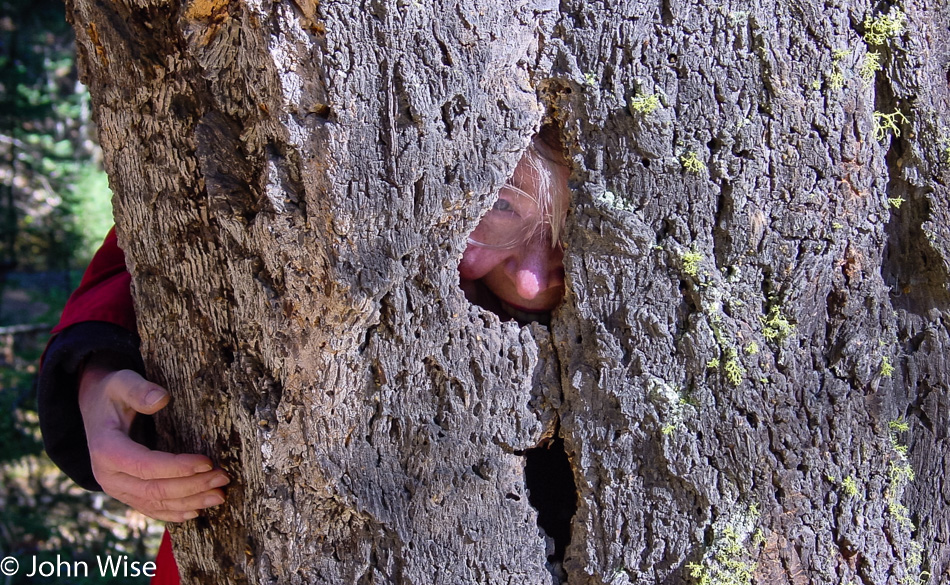
The old lady in the tree troll is from an old German fairy tale first noted by the Brothers Grimm almost 200 years ago. It was one of the scarier stories made all the worse as the spirit occupying the tree was left there with the passing of the cursed person’s mother-in-law.
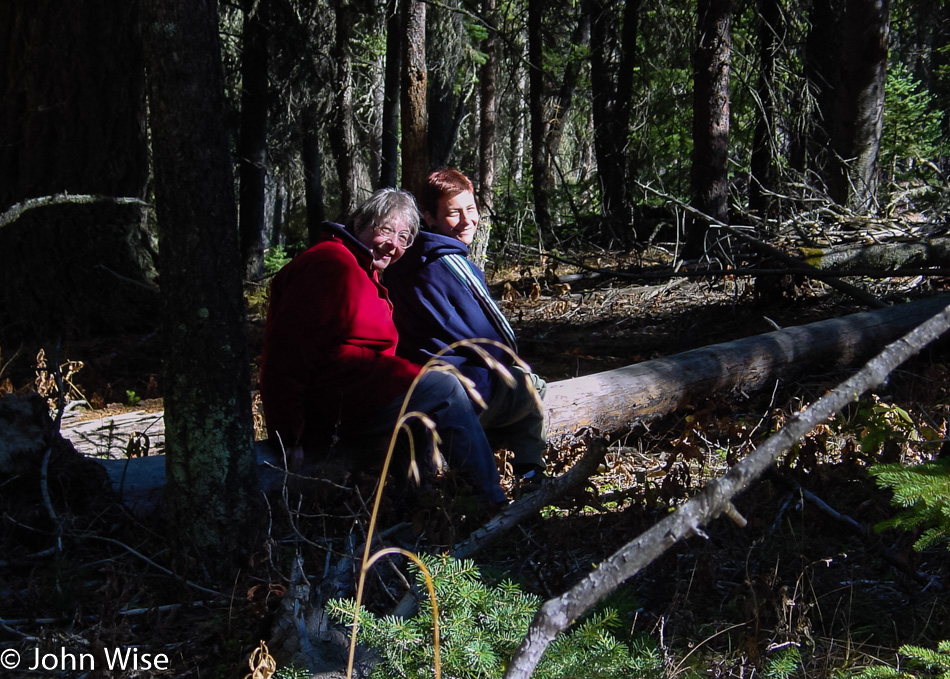
Maybe you are getting the idea that I’ve run out of impressions to write about from our trip out here? Well, maybe I have.
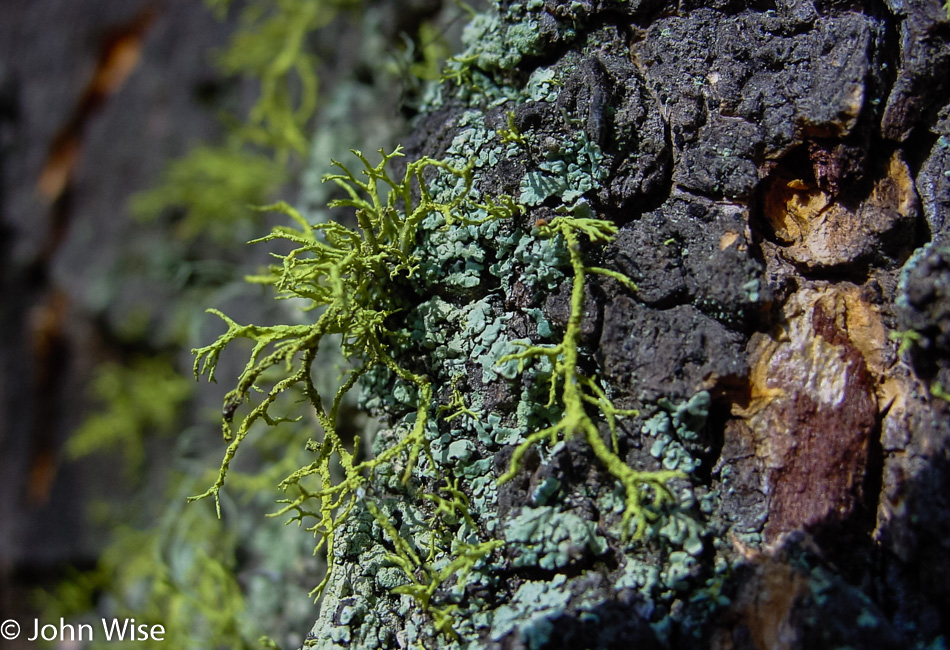
While moss tendrils growing out of lichen and bark are not something you see every day, it’s also something that, once it has been described and shown, what more could be said? I could drone on about the molecular structure or its place in the scheme of evolution, but maybe that geeky stuff gets tiring. Oh well, then here goes the nerd out about the scene pictured. The green tendrils are Wolf Lichen, a.k.a. Letharia Vulpina. The turquoise lichen are filaments of fungi that colonies of cyanobacteria, a.k.a. algae, take up residence in living symbiotically as a happy family. As for the bark that these lichens are living on, well, that’s obvious: it’s a conifer. Why is this so obvious? It’s because the Wolf Lichen grows on the bark of these trees in particular. Finally, do not try to eat this lichen as it is toxic, especially to wolves and foxes, but it is a good source of dying fabrics and yarns. Now, you probably know considerably more about lichen than when you started reading this blog entry.
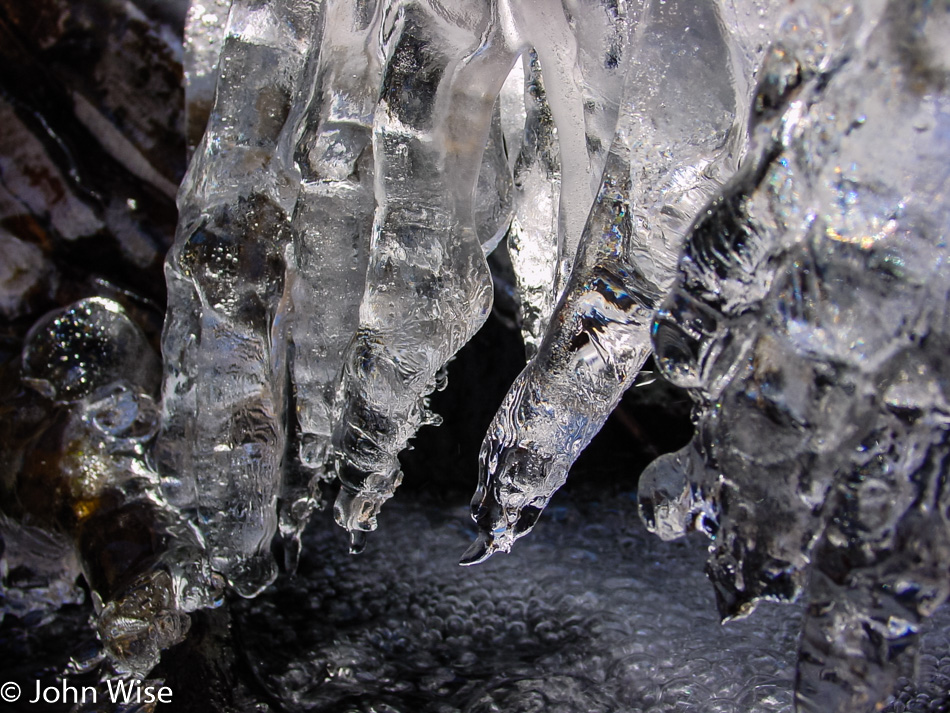
I’m not pulling a rabbit out of my hat regarding telling some interesting tidbits about these ice cycles; I just thought they looked cool, especially with that carbonated-looking water below them.
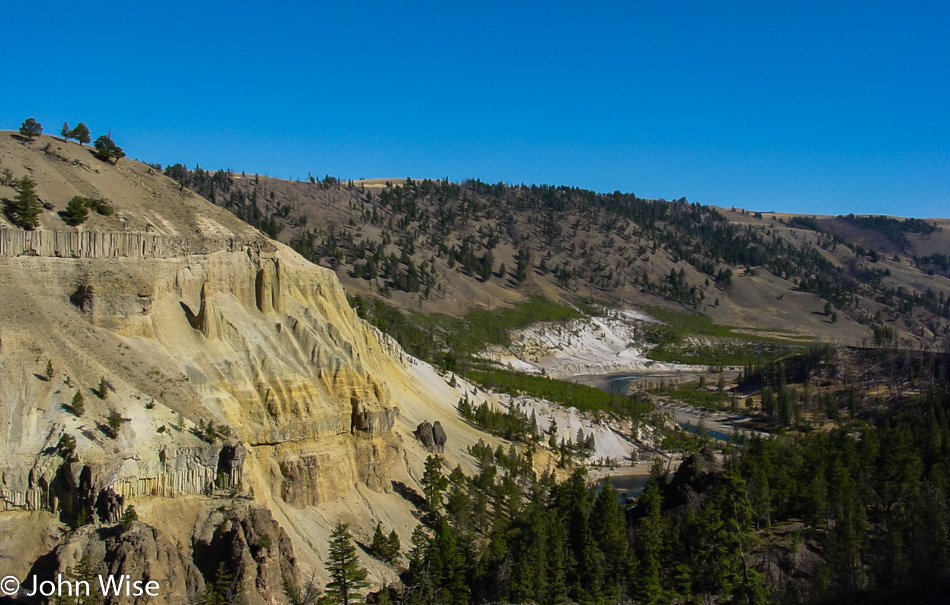
Took off down the Grand Loop Road to visit a corner of the park we’ve not been in yet, but at the Tower General Store, we reached the end of the road as it was already closed for winter. While we did get this view of the Yellowstone River, we won’t get to visit Mt. Washburn on this trip, maybe someday.
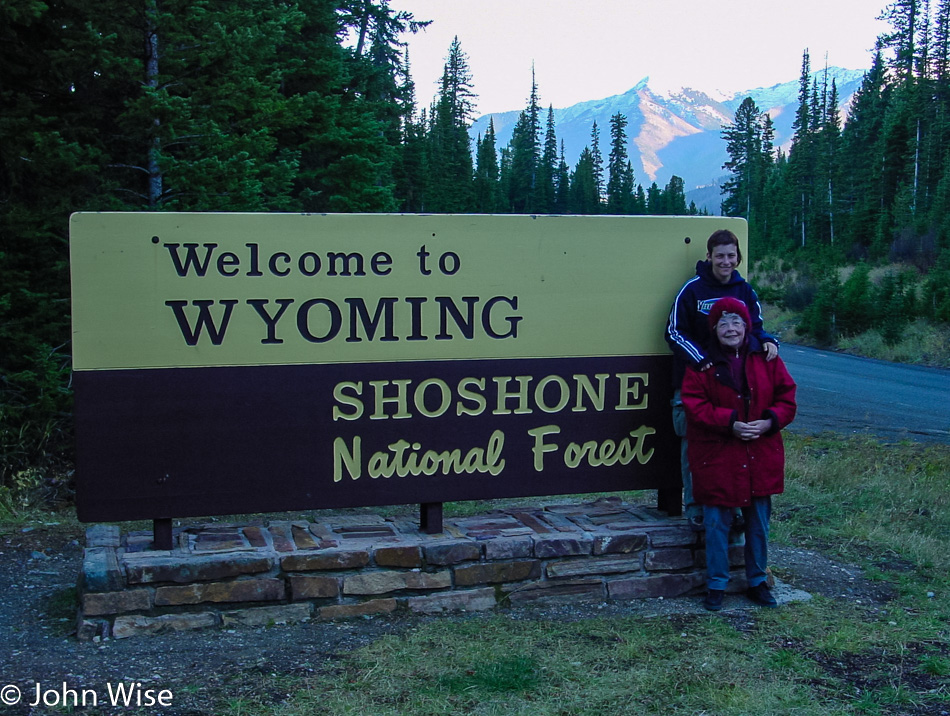
So, instead, we drove back out to the Lamar Valley and dipped our toe into Montana. As we already have a photo of Jutta and Caroline in front of a Montana state sign, we instead snapped this one upon reentering Wyoming. We stopped along the way many times and walked out to the Lamar River and at one particular bend in the river where Soda Butte Creek and the Lamar meet, we stopped for a good long time and just watched the area as we had been told that the day before there was a wolf pack seen here with an elk that had met its end. I’m pretty sure they were not paying their respects but were instead having a snack. No luck seeing or hearing wolves on this visit to Yellowstone, but no big deal as things have been just perfect.
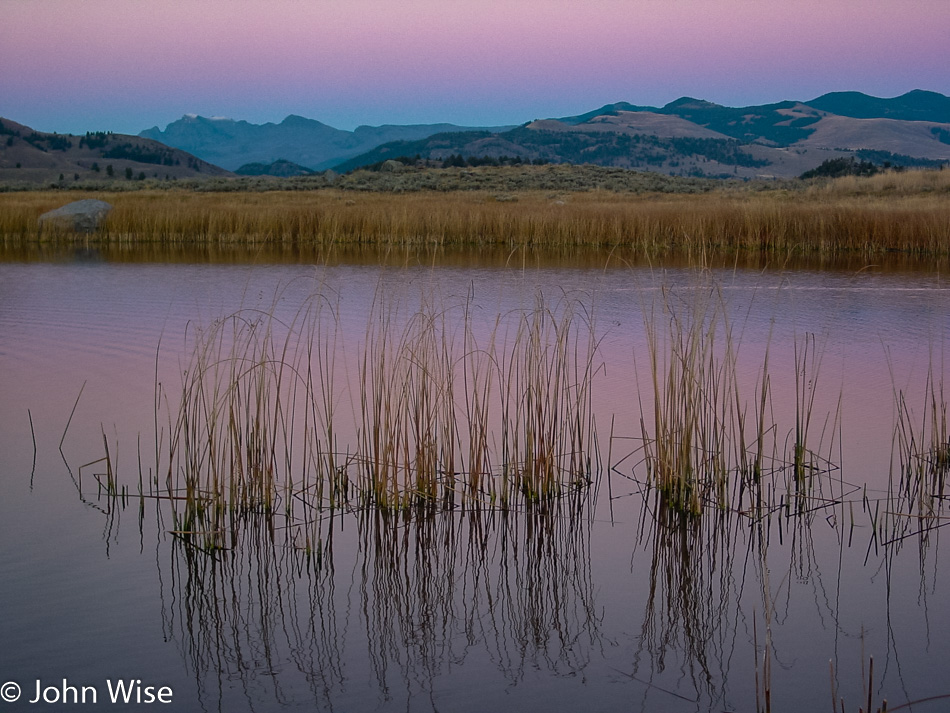
Abendrot is the German word for describing the red color of the sky as the sun sets. Abendrot elicits oohs and aahs from Jutta every time she spots a bit of it; that and sagenhaft which translates to fabulous or marvelous. Das Abendrot war sagenhaft, and now you’ve learned a little German, too.